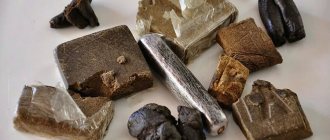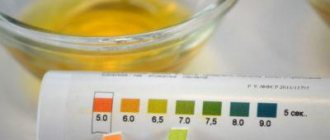Botanical description of the plant
Garden parsley (Petroselinum crispum) is a herbaceous biennial that belongs to the Apiaceae family. It grows in Europe, where it is cultivated as a seasoning and vegetable crop. In the first year, it forms a leaf rosette with a diameter of about 50 cm. There are root and leaf varieties of the plant. The root of the plant is used as a snack or vegetable in soups, stews and casseroles. The leaf part is used as a seasoning.
Plant characteristics:
- flowering stem height: up to 75 cm;
- stem: straight, hollow inside, formed in the second year of growth;
- leaf rosette with a diameter of 20–50 cm, growing well in the first year of cultivation;
- leaf size: 10–20 cm in length;
- leaves: triangular, pinnately dissected, dark green;
- root: thickened, white;
- flowers: yellow, 2-3 mm in diameter, collected in umbrellas;
- seeds: ovoid, green, 1.5–2 mm in length.
Did you know? The term parsley comes from the Greek word petroselion, which means rock celery. Thus, the ancients noted the plant’s choice of place to grow
-
rocky areas of soil.
Flowering occurs in June-July. After the seeds ripen, the plant usually dies. The plant can be grown in the garden, between the rows and even on the windowsill.
Diuretic properties of parsley
The plant is traditionally used as a diuretic and as an antihypertensive agent. In 2002, a study was published in the journal Ethnopharmacology confirming the diuretic effect of the plant. The rats were given tea made from its seeds to drink and their urine volume was measured. Research results showed that the leaf extract significantly increased the volume of urine produced within 24 hours.
Technically, the diuretic process looks like this:
- Parsley affects the transport of potassium in the body. Its liquid extract works like a pump, extracting potassium and sodium ions from the body.
- As a result, water accumulates in the kidneys, which causes a diuretic effect.
Important! Avoid taking parsley with diuretics or lithium to minimize the risk of dizziness and low blood pressure.
What parts of the plant are used?
To prepare products with a diuretic effect, seeds, roots, and dry or fresh leaves of the plant can be used. They are prepared from:
- decoctions;
- teas;
- infusions
Parsley can be used either in its pure form or in combination with other components.
For what purposes is parsley used as a diuretic?
Diuretics, or diuretics, are needed to reduce the amount of fluid that can accumulate in the tissues and cavities of the body. They are used in the treatment of heart, kidney and liver diseases, in other words, in the treatment of any processes accompanied by swelling. Diuretics effectively reduce not only fluid volume, but also reduce congestion in tissues.
The plant acts as an osmotic diuretic. It prevents the absorption of water and increases the pressure in the tubules to remove excess fluid from the body. The duration of the diuretic effect of diuretics can be from 30 minutes to 2–4 days. This depends both on the drug taken and on the individual characteristics of the body. The duration of exposure can range from 5 to 15 hours.
We recommend that you familiarize yourself with the features of using parsley juice at home.
Treatment of diseases
Herbalists use parsley to treat kidney problems, joint problems, nerves and more. Dr. John R. Christopher, one of the greatest master herbalists of the 20th century, used the plant in a variety of ways:
- for diseases of the kidneys and bladder;
- for jaundice and venereal diseases.
He suggested drinking tea from the plant's root for "stiff fingers" and other joint problems.
I also believed that gallstones could be removed by drinking 0.5 liters of fresh parsley tea every day. To make tea, pour boiling water over a handful of fresh parsley. Cover with a lid and leave. You can drink it throughout the day. Important! Parsley juice is an effective tonic for cleansing the blood. To use, dilute it with some other type of fresh juice, for example, carrot juice. But you should not use it more than 50 g per day.
Weight loss
The ability of parsley to reduce weight is based on the following features:
- It is low calorie - only 22 calories. There is absolutely no fat in it. But at the same time it contains a large range of useful substances. This allows you to reduce the caloric content of the diet without reducing its nutritional value.
- The plant is a source of protein, which increases the feeling of fullness due to the fact that the protein will be absorbed rather slowly.
- The plant is known to be very rich in homocysteine , a substance that reduces the risk of additional weight gain, stroke and high cholesterol in diabetics.
- Vitamin C contained in parsley supports the health of the entire body, but especially the endocrine system, which is responsible for metabolism. Normal metabolism eliminates the formation of “extra” kilograms.
- High levels of vitamin K help thin the blood, which means it lowers cholesterol and improves circulation, which, like metabolism, makes the body work more efficiently and prevents fat deposition.
- The plant is rich in folic acid, which helps the body convert carbohydrates into energy.
- Fiber helps remove waste from the colon, which in turn helps you achieve a flatter stomach. And this is good, especially if you don't exercise often.
- It supports the removal of fat cells from the liver, thereby helping people with the treatment of liver diseases.
- The antibacterial effect of parsley helps eliminate yeast and infections that can cause inflammation, swelling and hinder weight loss.
Video: eating parsley for weight loss
Relieves flatulence and helps your entire system digest food more efficiently, promoting nutrient absorption. It is also a powerful cell cleanser, which is also beneficial for overall health and will help promote weight loss.
Features of the use of parsley as a diuretic
Parsley tea helps with weight loss and also supports the immune system. Tea is sold in stores or you can brew it yourself. In addition to this, the following are used:
- decoctions;
- infusions;
- tinctures.
It is recommended to use fresh raw materials for preparing drinks, due to the greater amount of vitamins and other biologically active substances. And do not forget to take into account contraindications. They are quite extensive in parsley.
Find out more about the medicinal properties of parsley for the body of women and men.
Decoctions from leaves
Despite the fact that there are many products available to promote weight loss, herbalists recommend the use of medicinal herbs. They have fewer side effects and are better tolerated by the body. The method of preparation will always depend on the type of raw material. More dense - the roots or bark are boiled, and the leaves can be infused. The basic recipe for preparing the decoction is to mix raw materials and water in a ratio of 1:10.
Boil the mixture in a water bath for 0.5 hours or over low heat for about 20 minutes. The finished decoction is also sometimes evaporated to the volume specified in the recipe, obtaining a concentrated product. Drink a decoction of 100–250 ml at a time, but not more than 500 ml per day. The prepared drink is drunk during the day or stored in the refrigerator, but no more than 1-2 days.
Cautions:
- Do not take diuretic infusions if you have a long trip ahead.
- Do not leave the prepared drink on the table for longer than 10 minutes. Essential oils evaporate quickly, and the drink may lose its beneficial properties.
- You can dilute the decoction with water before use. This is necessary if you don't like the bitter taste of parsley.
Did you know? The first wreaths for winners in sports were made of parsley. And the pre-Olympic games, in which the winners were decorated with these wreaths, took place in the Nemean Valley at the Temple of Zeus around 500 BC.
Parsley root in milk
The root is similar to parsnip, but has a purer white color with a less earthy flavor. It is often sold with parsley tops. It is used in cooking, as well as in preparing a decoction with milk. The root is a mild diuretic. To prepare the decoction, take crushed roots - 20 tbsp. spoons and pour in 500 ml of milk. Place the mixture in a water bath and evaporate until the volume is reduced by 2 times. The decoction is filtered and drunk before meals.
Seed decoction
The seeds are an effective diuretic. They are also able to remove toxins, salts, and “bad” cholesterol from the body. A decoction of the seeds will help with weight loss, as well as in the treatment of rheumatism and other diseases. They don't even have to be boiled.
Simply chewing the seeds freshens your breath and reduces your appetite. To prepare the decoction you will need to take 2 tsp. seeds and pour a glass of boiling water over them. Leave to steep under the lid for 20 minutes. Enjoy the drink cold between meals.
Did you know? In ancient Greece, parsley was planted on graves, and the phrase “need parsley” meant that death was imminent.
How to brew parsley
Diuretic drinks are prepared from all parts of the plant - greens, roots and seeds. We will tell you how to prepare decoctions further.
Seed decoction recipes
Parsley seeds contain essential oil that helps improve urine excretion . To prepare the decoction, take 1 tsp. ground seeds and 250 ml of boiling water. The raw materials are poured with hot water, brought to a boil and left in a thermos for 8-10 hours. The decoction is taken according to the following scheme: 1 tbsp. l. 3 times a day 30 minutes before meals for 2 weeks.
A decoction of their seeds, dried roots and parsley is highly effective . For 200 ml of water take 2 tbsp. l. ingredients, place the container on low heat and boil for 2-3 minutes. The drink is infused for 40-60 minutes and consumed in the same way as a decoction of seeds.
Leaves
To prepare a decoction of herbs, take 100 g of fresh raw materials and 1 liter of clean water . Place an enamel pan with water on the fire, bring to a boil, add finely chopped herbs, bring to a boil again and cook over low heat for 5 minutes. Remove the container from the stove, cover with a lid, wrap it in a towel and leave for 30-40 minutes. Then the liquid is filtered through a sieve or cheesecloth into a glass jar. Dosage regimen: 100 ml three times a day for 5-7 days.
To prepare a decoction for weight loss, take 50 g of fresh parsley root and add 1 liter of water. The liquid is boiled over low heat for 5-7 minutes, filtered and cooled at room temperature. Dosage regimen: 200 ml 3 times a day 30 minutes before meals for 2-4 weeks.
Advice. Add lemon, lime, chamomile, mint, ginger, or mint to your infusions to enhance the flavor.
Roots
Diuretic decoctions of parsley are prepared not only with water, but also with milk . Place 250 g of crushed dried roots in an enamel bowl and pour in 250 ml of low-fat milk. Place the container on low heat and cook until the volume of liquid is reduced by half. The broth is left to cool at room temperature and filtered through cheesecloth. Dosage regimen: 1 tbsp. l. 3 times a day 30 minutes before meals for 2 weeks.
Possible contraindications for use
Short-term intake of plant materials for culinary and medicinal purposes in small doses is safe. If you use it as the main tool in a weight loss program, then consider the following factors:
- Parsley should not be consumed by those who are allergic to it, celery, caraway seeds, or other umbelliferous plants.
- For liver and kidney diseases.
- Pregnant women in the first trimester due to the risk of abortion.
- For diabetics, complete with medications that lower sugar levels, since parsley also lowers it.
- With high blood pressure, so as not to increase it even more.
- In case of decreased blood clotting or before upcoming surgery. If you have consumed parsley, tell your doctor.
Using parsley for weight loss is completely justified. This is explained by the fact that it contains many useful biologically active substances and no side effects. If you start to lose weight, keep in mind that any weight correction occurs along with a diet correction. Without this, the use of plant raw materials will be ineffective.
Harm and contraindications
Short-term use of parsley decoctions (2-4 weeks) is safe for healthy people.
However, such drinks have contraindications :
- allergies to parsley, dill, caraway seeds, celery;
- the presence of large kidney stones (washing them out leads to blockage of the ureter and severe pain);
- pregnancy in the first trimester due to an increased risk of rejection of the fertilized egg;
- decreased blood clotting;
- chronic diseases of the gastrointestinal tract;
- epilepsy.
With prolonged use, nausea, vomiting, headache, muscle pain, and rapid weight loss occur.










